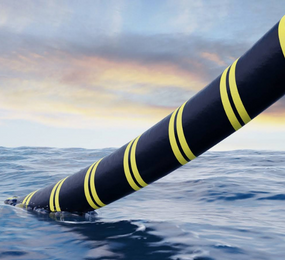In order to increase their product reach and streamline their supply chain processes, there is an increasing demand for industrial systems that are more competitive. With the rapid development of digital technologies, the vision of a sustainable supply chain is becoming a reality. The environment of the supply chain is compactly interconnected with devices, equipment, and people thanks to industry 4.0, which makes it possible to access and analyse real-time data.
Sustainability in the supply chain is defined as the incorporation of environmental, social, or corporate governance considerations into the sourcing, transformation, and delivery of raw materials to the market. However, supply chain sustainability and the product's supply chain do not end when it reaches the market. Reuse, recycle, and retirement strategies must be planned and carried out. Supporting a circular economy is an important aspect of supply chain sustainability. The goal is to minimise environmental harm from factors like energy usage, water consumption and waste production while having a positive impact on the people and communities in and around their operations.
Planning for the sustainability of the supply chain results in the triple bottom line: Profits, people, and the environment: especially in light of the limited environmental resources on the planet.
According to research, the supply chain accounts for the majority of a company's environmental impact. As goods are produced and transported around the world, supply chains typically involve energy-intensive production and transportation. As a result, rather than altering other business procedures, organisations frequently have the ability to make the greatest impact by modifying their supply chain.
Some factors that promote the sustainability of a supply chain is;
-
Build sustainability into organisational strategy and operational goals,
-
Examine how organisations organise their procurement activity, and
-
Enhance transparency of the process in manufacturing and distribution.
In the years to come, supply chain sustainability will be driven by innovation. The circular economy and data-driven supply chains are two trends that will maintain momentum in this field.
A circular economy aims to eliminate waste and pollution from products and systems like supply chains. Products in this system are designed to leave a minimal impact on the environment, last longer, and can be easily disassembled, remade, or transformed for reuse.
Companies use cloud-based supply chain execution systems in data-driven supply chains, which offer in-depth analytics and may even collect data from equipment sensors and other Internet of Things (IoT) devices. Businesses are able to find, implement, and monitor strategies to become more sustainable as a result of this deeper visibility into their operations.
Join us on May 30 and 31, 2023, to become a part of the community and take advantage of one-of-a-kind networking opportunities with senior-level decision-makers who will share and discuss the most effective course of action, strategies, and knowledge regarding the shifting supply chain landscape.You can participate actively in highly insightful discussions with limited seating to exchange ideas and gain knowledge from industry leaders.
To register or learn more about the Forum please check here: https://bit.ly/3DsfWE4
For more information and group participation, contact us: [email protected]
















